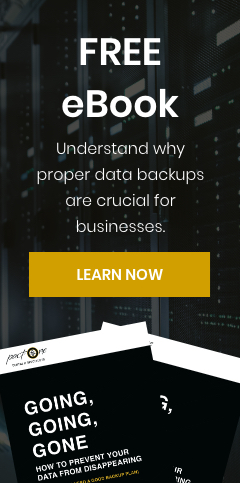Dental clinics store and handle a huge amount of sensitive patient data called protected health information (PHI). PHI is any information that identifies a specific patient, which includes:
- Date of birth
- Residential address
- Email address
- Phone number
- Medical history
- Insurance information
- Laboratory tests and results
- Mental health condition
Cybercriminals and malicious insiders looking to make easy money steal PHI to sell it on the dark web, extort money from their victims, and commit fraud.
As a dental practitioner, it's your responsibility to ensure your patients' private information is safe and properly handled.
You can do this by implementing a zero trust policy.
What is zero trust?
Developed by John Kindervag, zero trust is a cybersecurity concept revolving around the "never trust, always verify" principle. It requires anyone accessing your network and resources, both inside and outside, to be authenticated, authorized, and continuously validated before being granted access to patient data.
Why is zero trust important?
Adopting a zero trust security framework entails utilizing various preventive measures, including multifactor authentication (MFA), microsegmentation, and the principle of least privilege (POLP) to stop attackers from stealing your dental practice's sensitive information.
The case of famous whistleblower Edward Snowden leaking Defense Information Systems Agency classified data is a good example of why implementing a zero trust policy is important. Snowden was a subcontractor for the National Security Agency (NSA) who had legitimate credentials to access the agency's network without restrictions. As the agency did not have additional authentication and authorization processes, Snowden was able to download top secret files about the NSA's surveillance programs, which caused a huge scandal and exposed a vulnerability in the agency's system.
The core principles of zero trust
The following core principles of zero trust can be incorporated into your organization's security policy to strengthen your defenses against threats and attacks.
1. Review users' default access controls
Dental staff with unrestricted access to your system are prime targets for cybercriminals. Attackers who manage to steal login credentials can gain full access to private patient information, which they can sell on the dark web or use to commit fraud. Limiting what information your staff can access is a good way of mitigating this threat.
2. Use different preventive measures
The success of a zero trust framework in preventing data breaches and minimizing their impacts relies on the implementation of various preventive measures.
- Multifactor authentication (MFA)
MFA requires users to provide two or more identifying factors to verify their identities, such as biometrics, application authentication codes, and physical security keys. This extra layer of security will prevent cybercriminals from accessing your system since they don't possess the additional authenticating components. - Principle of least privilege (POLP)
POLP states that users should only be given the access rights they need to perform their tasks and nothing more. For instance, an employee in charge of purchasing dental supplies should have access to dental inventory management systems, but not to patient information systems. Limiting users’ access rights prevents insider threats from gaining access to files and resources outside their job function. - Microsegmentation
Microsegmentation is a cybersecurity technique that splits your network into small zones so that workloads can be isolated and networks/zones can be secured individually. With this technique, system administrators can create security controls for each zone to improve breach containment and reduce your clinic's attack surface. In case one of these zones is breached, attackers won't be able to move to another zone because their access rights can only be used for that specific zone.
3. Implement real-time network monitoring tools
Real-time network monitoring tools can scan, analyze, and log all network activity to identify where suspicious activity is happening. It will improve your breakout time, or the period of time when attackers break into the first machine to the time they move to the next, and allow you to respond to threats quicker.
To keep private patient information safe from cybercriminals and insider threats, partner with a reliable managed IT services provider like Pact-One. Our team of dental IT experts will protect your network using multilayered security measures to prevent costly cyberattacks. Call us today to learn more about our dental IT services.
Dental IT. Remove the Burden. Embrace the Use.
Quality patient care – it's ultimately why you became a dental professional. But, some business operations can get in the way (such as pesky computer issues or lack of IT support). That’s where Pact-One Solutions can help! Our passion lies in supplying reliable, responsive dental IT support and security that practices can count on.
Whether you’re looking for dental IT services for your startup or searching for more responsive dental IT support – our team of dental IT specialists have you covered. With team members throughout the United States, we offer nationwide support to dental practices of all sizes. Our wide range of dental IT services ensure your data is secure, accessible, and protected.
Don't let technology challenges hinder your ability to deliver exceptional dental care. Contact us at info@pact-one.com or 866-722-8663 to join 350+ dental practices thriving with the support of a dedicated dental IT team.


